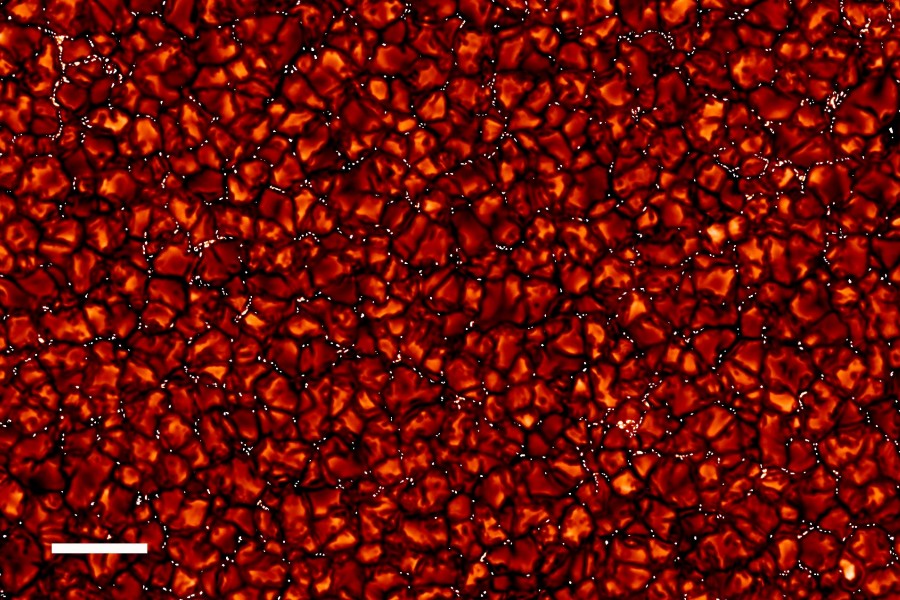
In Astronomy Picture of the Day for April 16: Convection cells in the surface of our star.
Up close, the solar surface is a striking patch work of granules in this very high resolution picture of the quiet Sun. Caused by convection, the granules are hot, rising columns of plasma edged by dark lanes of cooler, descending plasma. But the high-resolution view reveals that the dark lanes are dotted with many small, contrasting bright points. Constantly present on the solar surface, the bright points do not seem to be related to sunspots that come and go with the magnetic solar cycle. Nonetheless, the bright points are regions of concentrated magnetic fields and are bright because the magnetic pressure opens a window to hotter deeper layers below the photosphere. For scale, the white bar at the lower left corresponds to 5,000 kilometers across the Sun's surface. The sharp, narrow-band image was recorded in September, 2007 using the Swedish Solar Telescope on the astronomical island of La Palma.For comparison, 5000 kilometers in solar diagram vs. 4100 km from Orlando to Seattle:
Nice.
